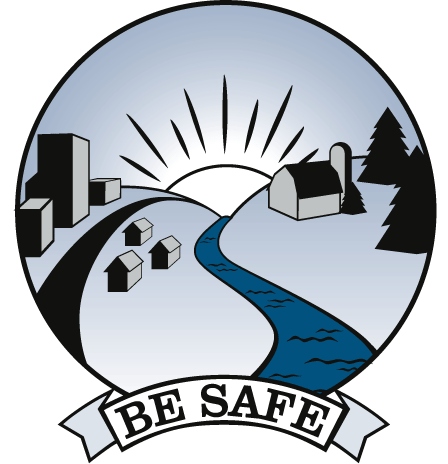![]()
![]()
![]()
LAND APPLICATION OF TOXIC SLUDGE
Threatens Communities & Drinking Water

Sludge
Contains Toxic Waste
Sludge
is defined as �a viscous, semisolid mixture of bacteria and virus-laden
organic matter, toxic metals, synthetic organic chemicals, and settled
solids removed from domestic and industrial wastewater at sewage
treatment plants� [HCDES]. The sewage treatment plant process
concentrates up to 90% of dioxins, toxic metals, pesticides, hazardous
industrial and radioactive wastes, disease-causing bacteria, viruses,
and parasites in leftover sludge [IJEP, 1999]. Incredible
as it seems, this toxic product is sold to the public as �soil fertilizer�
and is spread on our farm and grazing lands; on school grounds,
ball fields, parks and golf courses. (See Toxic Fertilizer Brochure)
From
Oceans to Our Communities
After
years of dumping sludge in our oceans, this practice ended in 1992
when the Ocean Dumping Ban Act of 1988 went into effect. This left
municipalities and local governments with a new problem�how to get
rid of the tons of sludge they generate on a daily basis. The
federal Environmental Protection Agency (EPA) stepped in with a
plan to �solve� this problem by promoting sludge (sometimes called
�biosolids,� a public relations term that is used interchangeably
by EPA with the technical term �sewage sludge�) as fertilizer to
be spread on land�where people live, work and play. Their
plan has allowed toxic chemicals into our air, water, soil, crops
and into us.
Serious
Health Effects
The
past decade of applying sludge to land has resulted in contamination
of farmland, parks, school grounds and water supplies. Many
health problems, including deaths, have been linked to sludge exposure;
some of these have been documented in medical and technical journals.
[BMC, ES&T] Two wrongful death lawsuits have caused government
officials and experts to sound the alert. The US Inspector General
stated �While EPA promotes land application [of sludge], EPA cannot
assure the public that current land application processes are protective
of human health and the environment� [USIG]. Experts from
EPA and Duke University cite that frequently reported
health complaints from sludge exposures include eye, nose and throat
irritation, headache, nausea, diarrhea, hoarseness, sore throat,
cough, chest tightness, nasal congestion, palpitations, shortness
of breath, stress, drowsiness, and alterations in moods [JOA]. Two children in Pennsylvania and a
man in New Hampshire died from mysterious infections after sludge
was spread near their homes. Lawsuits have been filed against
the government for failing to adequately regulate sludge use. Adding
to the toll on humans, sludge contaminates our drinking water
and food supply and harms fish, wildlife, livestock and pets. It
is impossible to �treat� sludge so that the toxic mix of heavy metals,
synthetic organic compounds (e.g. dioxin and PCB�s), pathogens and
radioactive contaminants in sewage sludge are rendered harmless.
Whether it is called �biosolids� or sludge, treated or not, it is
an unsafe material.
BE SAFE: Take Precautionary Action to Protect Our Communities from Toxic Sludge